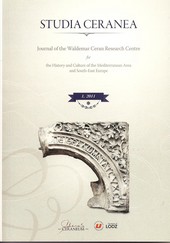Constantinopolitan Charioteers and Their Supporters
Constantinopolitan Charioteers and Their Supporters
Author(s): Teresa WolińskaSubject(s): History
Published by: Wydawnictwo Uniwersytetu Łódzkiego
Summary/Abstract: Support in sport is certainly one of the oldest human passions. Residents of the eastern Roman imperial capital cheered the chariot drivers. The passion for supporting the drivers was common for all groups and social classes. The hippodrome was visited by the representatives of the aristocracy, artisans and the poor of the city alike. The popularity of chariot racing is evidenced by their frequency. 66 days were reserved for circenses, that is racing. Organizing the competition along with all the accompanying events has been an essential task of circus factions (demes). In the empire, there were four factions named Blues, Greens, Whites and Reds. These factions were real sports associations, which can be compared to modern clubs. They had significant financial resources at their disposal. Each faction had their own racing team. They paid for and supported a number of drivers, runners, trainers of horses and wild animals, mimes, dancers, acrobats, poets, musicians and singers. They cared for their recruitment and training. They also employed caretakers, messengers, artisans of various specialties, grooms, etc. Expectations of subjects meant that emperors put great emphasis on the organization of shows and they were actively engaged in them themselves. The preparation was personally supervised by the city prefect, and in the relations with the factions the emperor was represented by the praepositus sacri cubiculi. The latter managed the Hippodrome staff. Byzantine supporters, like their modern counterparts, had their idols. The object of their worship, and at the same time the elite among those working on the hippodrome, were charioteers. Outstanding competitors enjoyed immense popularity, just like modern stars of football or volleyball. They had monuments and stelae dedicated to them, as well as poems which praised their achievements. The ceiling in the gallery above the imperial kathisma featured images of famous drivers.
- Issue Year: 2011
- Issue No: 1
- Page Range: 127-142
- Page Count: 16
- Language: English

